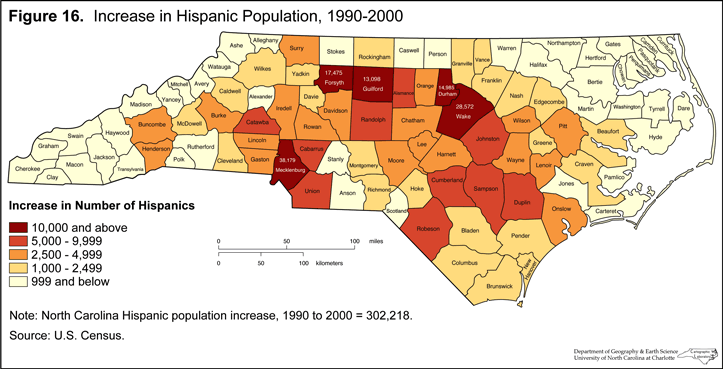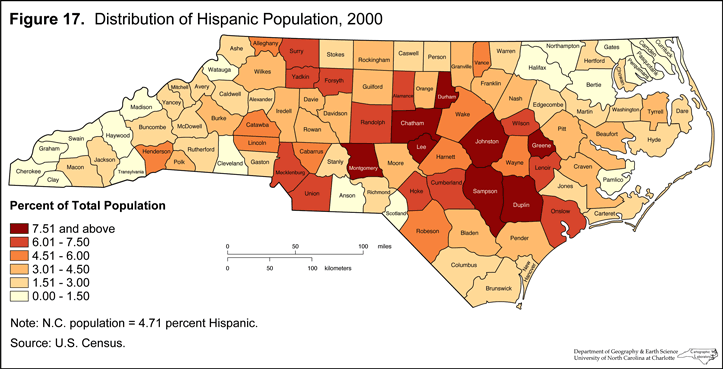Among the many findings in the Pew Center study is that employment gains by Latinos did not take jobs away from non-Hispanic. The study selected 36 counties in the six states for more detailed analysis and 19 of them are in North Carolina. In every one, employment of Hispanics and non-Hispanics increased during 1990-2000. In North Carolina generally, the total employment gain for non-Hispanics was 3.3 times greater than the increase in the employment of Hispanics.

The Hispanic population of North Carolina increased by over 368,000 between 1990 and 2002. The largest numerical increases were in Mecklenburg and Wake counties, which collectively accounted for over 22 percent of the statewide gain (Figure 16). Other sizeable gains were recorded in the Triad as well, along with some other Piedmont counties. In addition, several counties in the central Coastal Plain also recorded significant gains. Northeastern counties and most in the mountains attracted relatively few Hispanics.

The actual distribution of Latinos in 2000 is significantly different from the 1990-2000 growth patterns (Figure 17). The largest concentrations are found in several agricultural counties on the central Coastal Plain, in parts of the Research Triangle area and in Montgomery County. The proportions in the recent growth leaders, Mecklenburg and Wake, were higher than the state average but no more than some others on the central Coastal Plain or on the northern Piedmont. Again, the smallest shares were found in the northeast and in the mountains.
A study released by the Kenan Institute at UNC Chapel Hill in January, 2006, "The Economic Impact of the Hispanic Population on the State of North Carolina," reported that the statewide Latino population totaled 600,913 in 2004. This amounted to 7 percent of the state total in that year. Even more striking is the estimate that Latinos accounted for 27.5 percent of the state's net growth between 1990 and 2004. The study further reports that nearly half (45%) of these residents lacked "authorized documentation."